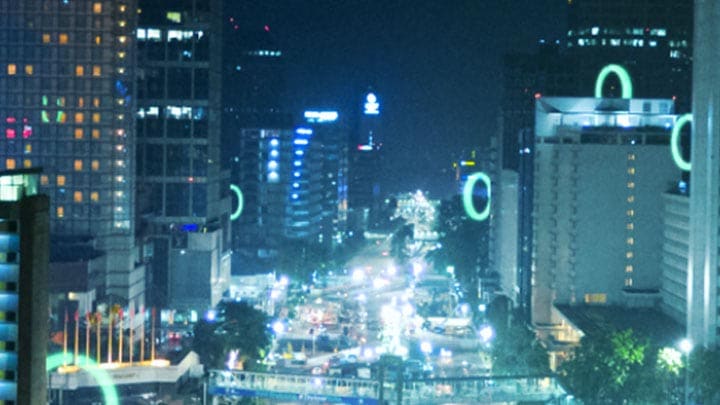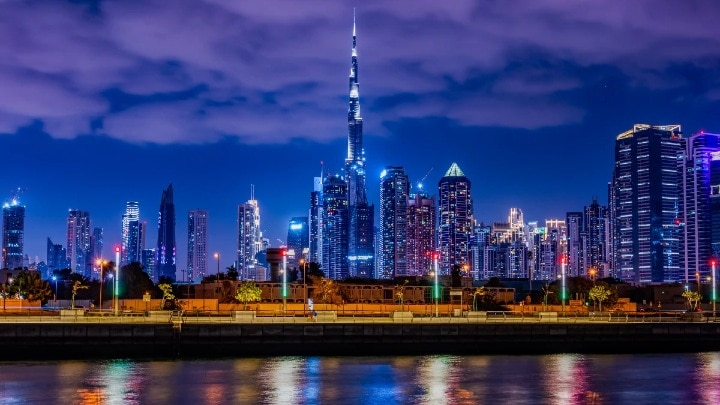May 17th, 2022
Today, the adoption of 3D printing as a “potentially new” manufacturing standard is growing rapidly. Designers and engineers around the globe are discovering the new and unique advantages of the digital process for their latest projects.
Generally, 3D printing is set to change the way we make almost everything. No surprises, the lighting industry, too, is showcasing the fact that 3D printing is not a hype. It is now a reality and is here to stay and innovate. Marks & Spencer has embraced sustainability with 3D printed luminaires for 50 stores in the UK, Colombia’s El Dorado International Airport has reduced its carbon footprint with almost 9,000 3D printed downlights, a leading Dutch supermarket chain Dekamarkt has undertaken custom lighting retrofit, with recyclable 3D-printed luminaires. Wondering how 3D lights are helping these leading brands? Here is how:
3D printing is not a new technology. The concept was first described in 1945 in a work of fiction and in 1971 a machine was patented to produce material that could be salvaged and re-used. At Signify, we have been innovating with the technology for many years now.
The lighting industry is accelerating the transition from a linear to a circular economy and technologies like 3D printing luminaires offers huge benefits to customers. 3D printed luminaires are designed to meet specific needs and uses for a variety of applications/ sectors. Whether these needs are performance improvements (higher efficacies in lumen per watt (lm/W) or better light quality), a diverse look and feel (different colour, texture, or shaped housing), or a system upgrade, the modular concept facilitates these needs. Instead of replacing the whole luminaire, modules can be exchanged or added, thus preserving value, and avoiding waste – making this method all about CO2 reduction, waste reduction and capable to make where you sell.

3D printing is a powerful tool that helps design and manufacture customised, recyclable products for consumer and business customers. Our 3D printed luminaires are designed for a circular economy and a lower carbon footprint. For example, these luminaires are printed with 100% recyclable polycarbonate and are fully reused at the end of their lifetime, avoiding material waste.
We also have the capability of locally printing and producing luminaires in Europe, eliminating long-distance shipping, and slashing each product’s carbon footprint. At the end of the product’s lifecycle, the materials can be simply shredded and recycled. This helps in reducing the carbon footprint and the light weight of polycarbonate makes these luminaires an ideal choice for any organisation on a sustainability agenda. In a traditional manufacturing process, the components might be made in a different country, sent by sea freight to another location, then delivered by truck to a distribution centre to sit in stock until it is ordered. With 3D printing, we don’t need to do any of that. Everything is made to order, produced, and shipped locally with minimal components and parts. This means less inventory in warehouses. What’s more, when compared with traditional luminaries, these innovative circular designs use no paint as the lamps are already pigmented, as well as less parts, and less screws.
The biggest advantage is that 3D printed luminaires are made to customer’s precise specifications, blending with existing fixtures or integrating highly customised design features, and delivered in a fraction of the traditional manufacturing lead time. A 3D printed luminaire has almost up to 47% lower carbon footprint for its materials, production, and logistics than its conventional equivalent.
With circularity as an integral part of a sustainable future, 3D printing also supports any organisation’s sustainability objectives, while offering a combination of lighting design, installation, and maintenance (under a service we call Lighting as a Service (LaaS)). Built on the concept of circular lighting, the design and install, operation, and maintenance of the product ensures there is no need to discard a luminaire. With the connected system these lights work on, maintenance is easy, which cuts down on waste, costs, downtime, and manpower. This model gives the customer the flexibility to return the equipment, reuse it, or recycle it, making these luminaires is one of the best examples of how sustainability can open doors to innovation and free up investment resources in other avenues.
15 years ago, our studies suggested that LED lighting will be the next big things and sure enough, LED innovations disrupted the lighting industry and set it on a new course. At Signify, with customers and organizations focusing on a green future, we believe that 3D printing is no longer a matter of if it is going to happen, rather than when it is going to happen. Needless to say, wholesalers and electrician installers should make the most of the opportunity presented by this innovation, due to the many benefits offered.
Firstly, additive manufacturing in the lighting industry will allow manufacturers to create uniquely designed lighting products which will suit the exact need of the customer and enrich the wholesalers’ product portfolio. This also gives customers architectural and aesthetic flexibility to design bespoke fittings with more innovative designs, with different shapes and more complex colours. What’s more, customers can order products at a minimum quantity of just 1 luminaire, making this an even more attractive offer. For example, this can help cater to the need for one recessed downlight with an unusual size cut out for a retro fit. Using a simple online configurator, a downlight can be designed to spec, in 5mm cut out increments ranging from 150-280mm as well as a range of bezel colours, optics, or controls such as Interact wireless, Dali and emergency.
Secondly, with the instant availability that 3D printing provides, both manufacturers and customers will benefit from lower costs and less time-consuming labor. To add to this, 3D printed luminaires can save time before install trying to find a suitable cut out, save time during install as these are customized lights and they will simply fit – as they are made as per exact specifications. Thirdly and most importantly, we have already established that 3D oriented luminaires are a great choice for customer on a sustainability agenda as they go against the make-use-waste economy. Lastly, 3D printed luminaires can offer improved customer satisfaction, from manufacturers like Signify, making this a win-win for the manufacturer, the customer, and the wholesaler – encouraging us to be a part of a changing world and take a step in the right direction.
3D printed luminaires are a great option to retrofit existing buildings with the right lighting type or to simply opt for a customized bespoke design to complement the interiors of a building. With ambitious sustainability targets for us a nation to live up to, we at Signify are serious about the need to reduce waste and the carbon footprint of businesses, while supporting customers’ needs, too and 3D printed lights offer exactly that.
Signify (Euronext: LIGHT) is the world leader in lighting for professionals, consumers and the Internet of Things. Our Philips products, Interact systems and data-enabled services, deliver business value and transform life in homes, buildings and public spaces. In 2023, we had sales of EUR 6.7 billion, approximately 32,000 employees and a presence in over 70 countries. We unlock the extraordinary potential of light for brighter lives and a better world. We have been in the Dow Jones Sustainability World Index since our IPO for seven consecutive years and have achieved the EcoVadis Platinum rating for four consecutive years, placing Signify in the top one percent of companies assessed. News from Signify can be found in the Newsroom, on X, LinkedIn and Instagram. Information for investors is located on the Investor Relations page.


December 17, 2024
Transforming Dubai’s iconic buildings with connected lighting from Signify